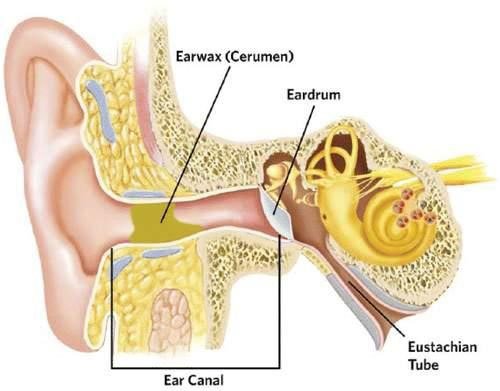What is ear candling?
Ear candling is advertised as a holistic alternative for removing wax and other debris from the ears. Practitioners who offer ear candling claim the procedure also has the ability to relieve tinnitus (ringing in the ear), sinus pressure, headaches, and infection. Some advocates even suggest ear candling can cleanse the body of “ash” that builds up in the Eustachian tubes.
How does ear candling work?
The process of ear candling involves placing a long, hollow, cone-like candle into the ear canal, often with a small plate at the base to catch debris. When the candle is lit, smoke circulates within the ear canal, which is suggested to create a mild suction and remove ear wax. After the candle burns for about 15 minutes, the candle is unraveled to reveal an accumulation of ear wax, “toxins”, etc.
Common Misconceptions
Ear candling is safe – FALSE
Advocates for ear candling claim the procedure is a safe way to remove a build-up of wax from the ear canal, however, medical professionals, such as otolaryngologists, recommend alternative methods for wax removal. Even if safety precautions are taken, ear candling can:
- Perforate the eardrum
- Burn the ear and the surrounding area
- Deposit ash from the candle into the canal and on the eardrum
- Cause an infection of the ear canal
- Push wax deeper into the ear canal
Ear candling removes “ash” and other toxins for the Eustachian tube – FALSE
Due to the anatomy of the auditory system it is not possible for the ear candling process to remove debris from the Eustachian tube. The Eustachian tube is located in the middle ear space behind the eardrum and is responsible for equalizing air pressure. The vacuum effect of the ear candle cannot reach the Eustachian tube because the eardrum blocks the smoke from entering the middle ear space. In addition, “ash” does not exist within the Eustachian tube. The tube is either filled with air in a healthy ear or fluid in an ear with Eustachian tube dysfunction.

Ear candling is an effective way to remove wax from the ear canal – FALSE
The claim that ear candling creates a vacuum within the ear canal has been debunked by medical studies1. In fact, it has been documented that candling does not actually remove ear wax, rather it deposits candle wax and ash into the canal2. The debris that is revealed after the ear candling process is from the candle and not the ear canal.
Ear candling can cure an ear infection – FALSE
The warmth from ear candling may provide temporary relief from the pain and pressure of an ear infection, however, it does not treat the infection. It is important to consult with your family doctor or ENT for proper treatment in order to prevent the infection from spreading.
How to safely remove wax build up
The best way to remove ear wax is to have it done by a medical professional who has the tools and expertise to do so effectively. Ears are actually self-cleaning and most of the time, wax will work its way out gradually. To help it along, a couple drops of mineral oil, DeBrox, sweet oil, etc. can be used to moisten the wax. If you don’t accumulate a lot of wax you can simply take a damp wash cloth to clean the entrance of the canal. Never use cotton swabs or other foreign objects, such as pen caps or bobby pins, to remove your own wax! This can cause a perforation of the eardrum, abrasion of the canal, and/ or an external ear infection. It can also push the wax deeper into the canal, which can cause temporary hearing loss and discomfort.
Professionals who can remove wax
If you experience ear pain, pressure, decreased hearing, or if your ear feels plugged, you may need a medical professional to remove it. Not all doctors feel comfortable with the procedure so it is always a good idea to call the office you plan on visiting before going in. Typically, ENTs, physician’s assistants, audiologists, and primary care doctors are the best sources for wax removal. Please let the professional who is cleaning your ears if you have a perforated eardrum, pressure equalizations tubes, or ear drainage. It is also important to tell your doctor if you are susceptible to infections or are on blood thinners.
If you have any questions on ear candling or wax removal, please don’t hesitate to call us at 616-994-2774.
Resources
- Kaushall P, Kaushall JN. (2000) On ear cones and candles. Skeptical Inquirer Sept/Oct:12.
- Seely DR, Quigley SM, Langman AW. (1996) Ear candles – Efficacy and safety. Laryngoscope 106: 1226–1229.
